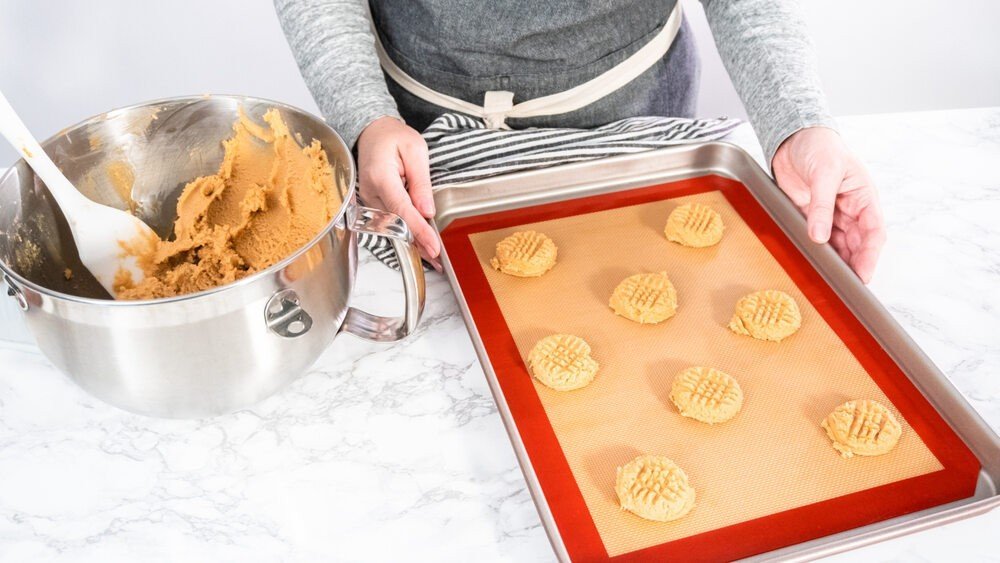Are Silicone Baking Mats Dishwasher Safe?

Silicone baking mats are a reusable non-stick alternative to parchment paper. Like all sustainable kitchenware, it’s important to know the correct method of cleaning them so you can preserve their lifespan and remove any bacteria between baking.
How to wash silicone baking mats in the dishwasher
To wash your silicone baking mat, roll it lightly and place it on the top rack of the dishwasher. Don’t fold the mat because the pressure of folding may break the silicone.
You can wash it in a normal cycle with other kitchenware, though should avoid placing any sharp objects or knives nearby which could pierce the mat.
Once the dishwasher is finished, you might find the mat is still oily, greasy, or has some residue. Hand washing can remove any residual food or oil.
How to clean silicone baking mats
You can hand wash your silicone baking mat using hot water and grease-fighting dish soap. Alternatively, you can clean a silicone baking mat with lemon juice or baking soda. It’s important to get grease-fighting or heavy-duty dish soap as regular soap won’t be as effective.
Submerge the mat in hot water with soap for 15-20 minutes before taking a non-abrasive sponge or cloth to scrub the surface clean. Once you’ve removed any spots or oil, dry the mat with a towel and leave it to fully dry in a drying rack.
If you find that it’s too difficult to fully clean, you may need to repeat the process or try other methods.
How to get smells out of a silicone baking mat
Cleaning your silicone baking mat several times might still leave some odor attached to it.
Boston Girl Bakes recommends putting the mat in an oven at 350°F to expand the molecules to release the odors. After 10 minutes in the oven, hand-wash the mat as above to complete the cleaning process.
Make sure you’re not placing the mat directly on an oven rack, grill, stovetop, or hot plate because extreme temperatures can cause the mat to melt or warp. Foodal advises placing your silicone baking mat in a sheet pan at all times.
Storing your silicone baking mat
To correctly store your mat, make sure first that they’re dry fully to avoid any moisture lingering. Once dry, store the mat flat or lightly rolled without bending or folding the material.
Because silicone baking mats can be cut easily, it’s important not to put any knives or sharp objects near them. You should also avoid placing heavy objects on them, especially if you’re storing them rolled up.
When to replace silicone baking mats
As long as you follow the manufacturer’s instructions, there’s no reason your silicone baking mat will need replacing for years. Cook’s Illustrated test of silicone baking mats found that the mats accumulated fats and oils in line with what the manufacturers said. Dishwasher-safe versions were generally cleaner, less sticky, and retained less-pronounced odors.
If you’re worried about the lifespan of silicone, all tests carried out describe the material as safe for food, and silicone has been FDA-approved for years.
Consumer advocate Debra Lynn Dadd told Scientific American that, after sampling material safety data to find any health effects of silicone rubber, silicone is “unlikely to react with or leach into food” and it is “not toxic to aquatic or soil organisms … not hazardous waste … can be recycled after a lifetime of use”.

